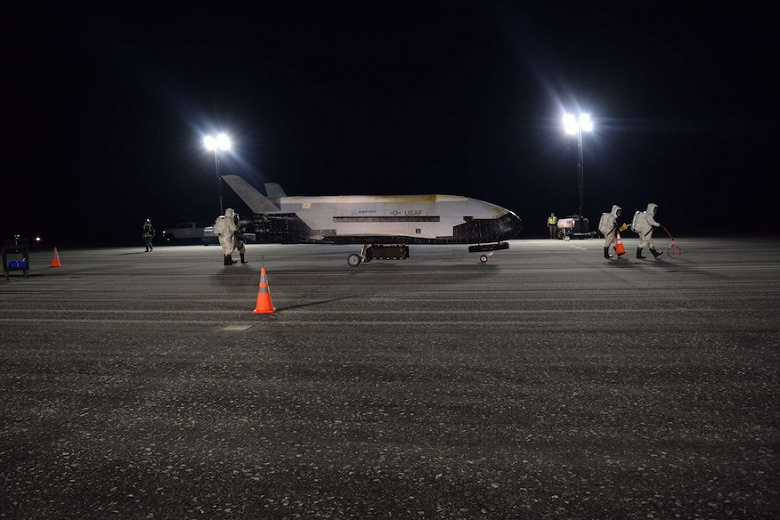
After two successful Falcon 9 rocket launches from California and Florida, SpaceX ended the first weekend of December with a static test of the Falcon Heavy rocket. The ignition of 27 Merlin engines took place a week before the scheduled national security launch, which had been planned for half a dozen years.
The U.S. Space Systems Command has announced that the USSF-52 mission is scheduled to launch no earlier than Sunday, December 10. The launch window has not yet been announced. This launch will be the first for the Falcon Heavy as part of the secret X-37B spaceplane project of the US military space program. At the same time, this will be the eighth launch for Falcon Heavy and the seventh mission for X-37B.
The U.S. Space Systems Command emphasized that this will be the fifth mission in 2023 in the Assured Access to Space (AATS) program.
“Our national security space launches enable us to accomplish our key space missions,” said Brigadier General Christine Panzenhagen, AATS Program Executive Director and Spaceport 45 Commander.
The launch agreement was signed with SpaceX as part of the procurement process for the National Security Space Launch Program (NSSL) Phase 1A. According to the SSC, the contract for this mission with SpaceX is worth about $155,000,000 and involves the use of lateral boosters that were already in operation.
“We benefit greatly from our collaboration with government agencies and from the developments being made by commercial organizations. Getting used to the increased pace of launches is our standard operating procedure to ensure we have the right capacity to support future national security requirements in space,” said Walt Lauderdale, Falcon Systems and SSC operations manager.
After the SpaceX boosters were removed from the rocket, NASA representatives announced that they would be used to launch the Europa Clipper mission to Jupiter’s moon in October 2024.
After the Falcon Heavy launch in the middle of the month, the LC-39A pad will be reconfigured to launch a Falcon 9 rocket ahead of Intuitive Machines and NASA’s mission to send the Nova-C lunar lander to the Moon’s South Pole.

